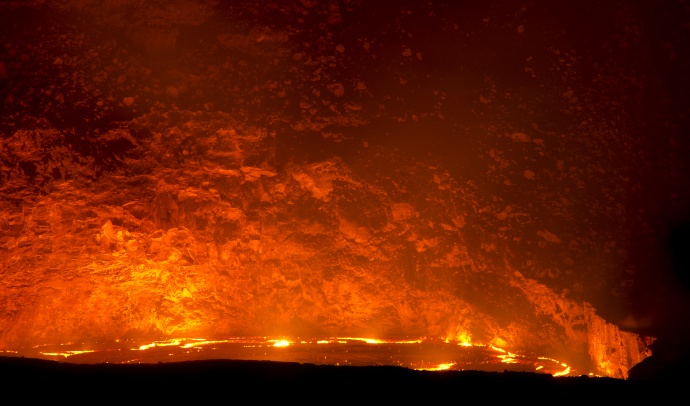Rise in Lava Lake Leads to Visitor Surge at Kīlauea

The rising lava lake within Halema‘uma‘u Crater at the summit of Kīlauea volcano draws thousands of additional visitors to Hawai‘i Volcanoes National Park. NPS Photo/Mark Wasser
By Maui Now Staff
***For more on this developing story, visit our sister site at BigIslandNow.com.
Hawaiʻi Volcanoes National Park is reporting an uptick in visitors to the Kīlauea Volcano and are attributing the influx to a steady rise in the lava lake at the summit.
The park is reporting “thousands” of additional visitors over the last several days, with some waiting 30 minutes or longer to park.
During peak visitation hours, rangers are redirecting vehicles to the Kīlauea Military Camp ball field where they can park and hike one mile to the Jaggar Museum observation deck. In an NPS announcement, park officials describe the deck as “the closest and best vantage point.”
“Visitors should come prepared to ensure a safe and enjoyable park experience,” said Superintendent Cindy Orlando in a press release statement. “We encourage people to avoid peak hours, and arrive after 10 p.m. and before 4 a.m. if possible, or they will likely wait in line for parking. The park remains open 24 hours a day,” she said.
Some tips offered by Park staff include the following:
- To observe viewing and weather conditions prior to arriving on site, visitors can monitor the USGS Hawaiian Volcano Observatory webcams. The KI camera provides a panoramic view of Halemaʻumaʻu Crater from HVO.
- Park officials say high levels of dangerous sulfur dioxide gas and volcanic ash can be blown over the Jaggar Museum by southerly winds. “These gases are a danger to everyone, particularly to people with heart or respiratory problems, young children and pregnant women,” officials said.
- Kīlauea Visitor Center offers updates on air quality 24 hours a day, and visitors can monitor the Hawaii SO2 network website.
- In addition, the public is reminded that park entrance fees apply and that the use of unmanned aircraft or drones is prohibited in all national parks.










